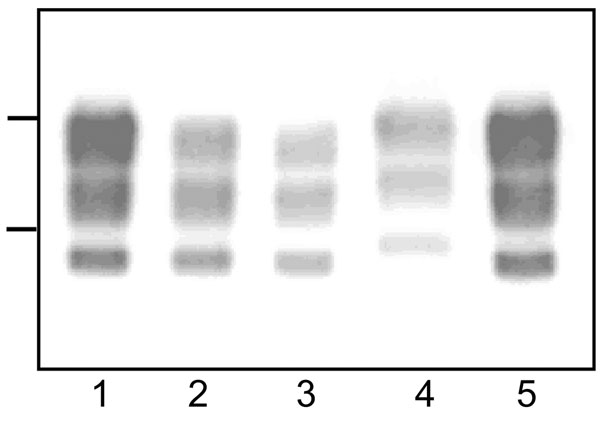Volume 13, Number 12—December 2007
Research
Phenotypic Similarity of Transmissible Mink Encephalopathy in Cattle and L-type Bovine Spongiform Encephalopathy in a Mouse Model
Figure 1

Figure 1. Western blot analyses of protease-resistant prion protein from proteinase K–treated brain homogenates from cattle transmissible spongiform encephalopathies (TSEs). Typical bovine spongiform encephalopathy (BSE) (lanes 1, 5), L-type BSE (lane 2), transmissible mink encephalopathy (TME) in cattle (lane 3), H-type BSE (lane 4). Bars to the left of the panel indicate the 29.0- and 20.1-kDa marker positions.
Page created: July 06, 2010
Page updated: July 06, 2010
Page reviewed: July 06, 2010
The conclusions, findings, and opinions expressed by authors contributing to this journal do not necessarily reflect the official position of the U.S. Department of Health and Human Services, the Public Health Service, the Centers for Disease Control and Prevention, or the authors' affiliated institutions. Use of trade names is for identification only and does not imply endorsement by any of the groups named above.